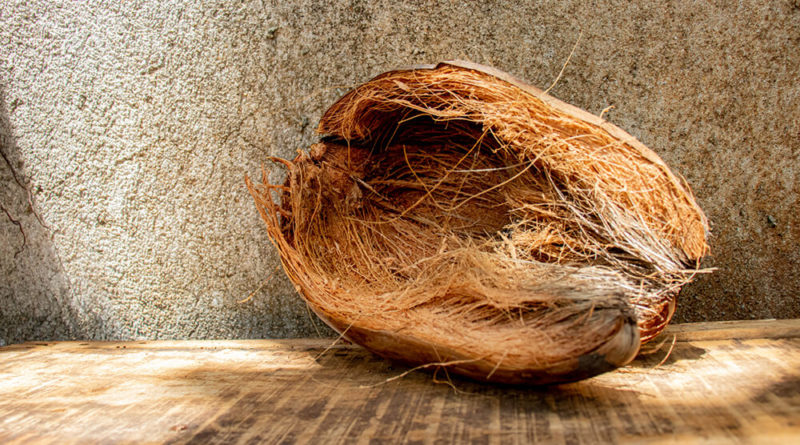The Chemistry of Coco Coir
Coco coir, a.k.a. cocopeat, a.k.a. coir peat is the ground-up seed husk tissue from the coconut palm tree (Cocos nucifera). It is an environmentally friendly grow medium since coconut husk is a renewable, biodegradable resource.
Email Newsletter
Join thousands of other growers who are already receiving our monthly newsletter.
What is coco coir?
Almost 3 billion coconuts per year are harvested in Sri Lanka alone. Other major producers of coco coir include India, Mexico, the Philippines, Guyana, Costa Rica, and Indonesia. The coconut’s fiber has found its way into many products, including cars, packaging, insulation, ropes, and matting, and many growers are now using coco coir as their gardening medium of choice.
The layer of the coconut containing the tissue that becomes coco coir is called the mesocarp. While it looks and feels like soil, coco coir is an inert medium that also shares many properties with hydroponics. Primarily, coco coir holds a substantial amount of water, holding almost ten times its own weight in moisture. The tough yet lightweight fibers are also resilient to the elements.
Coco’s woody, structural tissues consist of roughly two-thirds carbohydrates and one-third lignin. The carbohydrates are the complex polysaccharides cellulose and hemicellulose. Lignin is a complex polymer. These are the most prominent organic polymers on Earth. With large reserves of cellulose and lignin as energy storage, coco coir readily becomes a breeding ground for beneficial micro-organisms.
The beneficial microcosm in the root zone of plants grown in cocoa can also include bacteria, which are technically referred to as plant-growth promoting rhizobacteria (PGPR). Many beneficial fungi include mycorrhizae, yeasts and more. Fungi such as Aspergillus nidulans produce enzymes called cellulases that break down the cellulose in the coco fibers. At this point, the coir becomes a carbon source (energy) for all the micro-organisms in the soil and the plants themselves.
Using a coco-specific base nutrient is the key to successful gardening with this medium. Coir possesses significant amounts of natural potassium (K) and phosphorus (P). It also contains trace amounts of nitrogen (N), calcium (Ca), magnesium (Mg), boron (B), chlorine (Cl), copper (Cu), iron (Fe), manganese (Mn), molybdenum (Mo) and zinc (Zn). A base nutrient designed for a coco grow medium should reflect this composition and should have a lower P-K value than a base nutrient ideal for soils and hydroponics. The microflora living in coco requires nitrogen and removes it from the coir in a process called nitrogen drawdown. To balance this drawdown, a coco-specific base nutrient should have a higher nitrogen percentage than a base for soil and hydro.
Since coconut trees grow by the ocean, coco coir contains a high concentration of sodium and chlorine that can be detrimental to plants in high concentrations. A good-quality coco medium should be thoroughly washed and leached of these elements. Also, coco treated in alkaline (basic) calcium nitrate solution saturates binding sites of the coco fibers, thereby preventing possible deficiencies.
How do I use coco coir?
Presoaking the fibers in an alkali treatment has been shown to increase the tensile strength of coco fibers by almost 30%. Check to see if the manufacturer of your preferred coco brand is buffered with calcium.
As a rule of thumb, be cautious when selecting bales and bricks of coco. The drying and compressing of the fibers creates dust, and it is a lot of work to decompress coco coir. Most bales of dried coco are compressed in a 6:1 ratio. Too often, waste-grade coir and coir dust is pressed into these bricks. The medium needs to be sieved to remove the small particulates. A high-quality coco should not contain any dust or tiny coco particles, as it can be compacted easily, thereby depriving the roots of oxygen and water.
The pH of coco coir is naturally between 5 and 6.5—an ideal range for most plants. This gives the medium a distinct advantage over other mediums that need pH conditioning before use. Coco works best with 10% recycled glass stones or perlite added to it to aerate it further and prevent compaction. Earthworm castings can also be added to stimulate the microbial community.
Coco can be reused for a total of three full indoor runs. Between each run, additional glass stones or perlite should be added. After harvest, you can add enzyme and flush solutions to pretreat the medium and remove any leftover salts and organic matter from the last run.
With a little practice, coco growers can get the flavor and aroma of soil gardens along with the efficiency and productivity of hydroponics—the best of both worlds!




